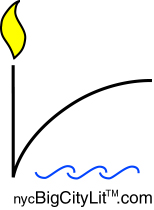
Interview
Phillis Levin and The Sonnet, A 'Chamber of Sudden Change'
On December 20, Phillis Levin, editor of a new, comprehensive sonnet anthology, appeared at a reception and reading in her honor at the 14th Street Y, organized as part of the Y Women Poetry Series by Veronica Golos. Joining her were Billy Collins, Karl Kirchwey, Qurash Ali Lansana, Elizabeth Macklin, and Caterina Romeo, along with mezzo soprano Sarafina Martino and James Smith on lute.
That more and more sonnets are being written is evident in her new collection, The Penguin Book of the Sonnet: 500 Years of a Classic Tradition in English. "Over half of the sonnets included," Levin told me, "are from the 20th century; it's a popular and sometimes 'self-conscious' poetic form." Among the many other contemporary contributors to the collection are: Marie Ponsot, Hayden Carruth, Richard Wilbur, Anthony Hecht, Donald Justice, W.S. Merwin, and Seamus Heaney.
The anthology has been assembled with obvious care and years of effort. She quoted to me from her extensive introduction to say that as we become acclimated to the sonnet environment, we experience a literary gesture as if it were a physical act. The poet seems to be saying, "Look what I have done," pointing to the past and future at once. [1]
In pointing to past and future, the poet is aware of the long-honored tradition in which s/he is participating. The idea of a literary gesture being tantamount to a physical act relates to the sonnet's bipartite (Petrarchan) structure in which "the octave and sestet conduct actions which are analogous to the actions of inhaling and exhaling." [2]
Levin emphasized the unique force and character of the volta or turn, its architectural, symphonic and shifting intellectual and emotional content--and subject matter--over the centuries: "Often the sonnet uses reason to understand emotion."
Having acquired her knowledge of the sonnet through years of teaching, Levin mentioned the tradition of sonneteers writing to each other in a competitive way, or to poets they admired. "Writing a sonnet," she explained, "is like a performance. The poet has to work within the constraint and pressure of the form. Its lyric intensity is for serious themes and subject matter, not just the conventions of courtly love."
--NJ
[1] The Penguin Book of The Sonnet: 500 Years Of A Classic Tradition In English, Phillis Levin, (Ed.), Penguin Books, NY, 2001. (Introduction, xlviii.)
[2] Fussell, Paul, Poetic Meter and Poetic Form, p. 120